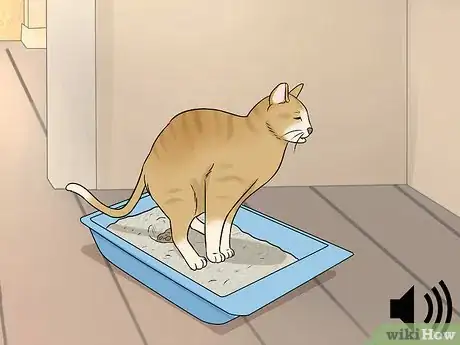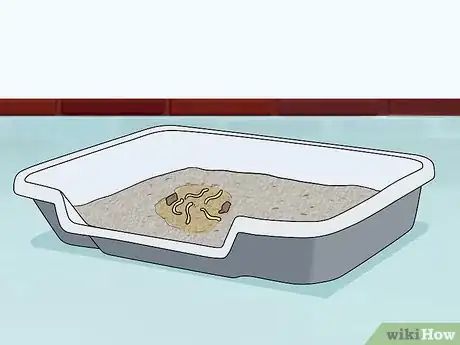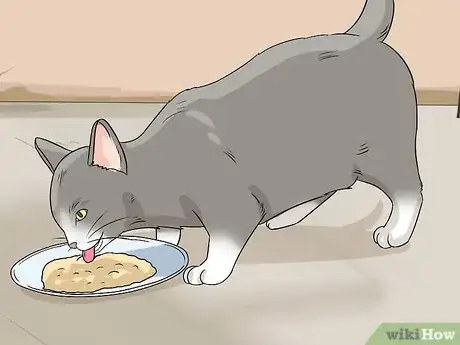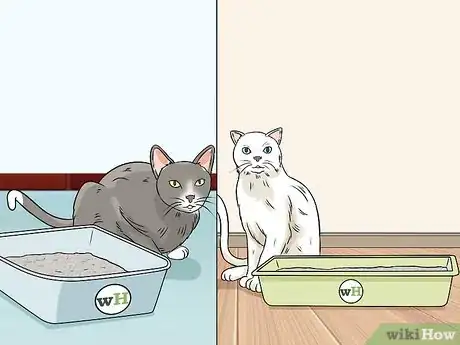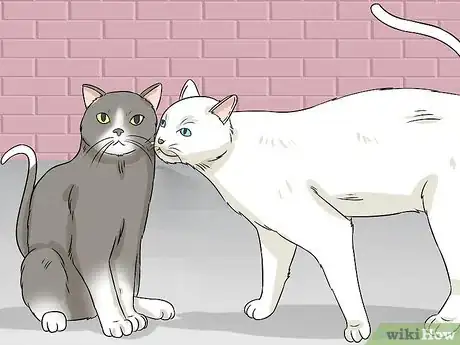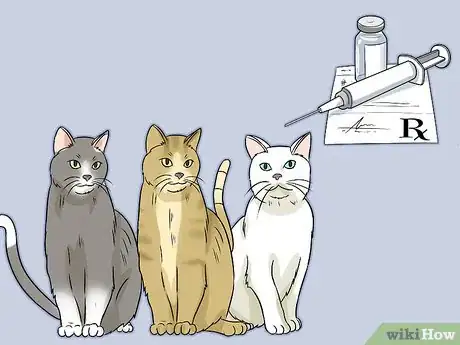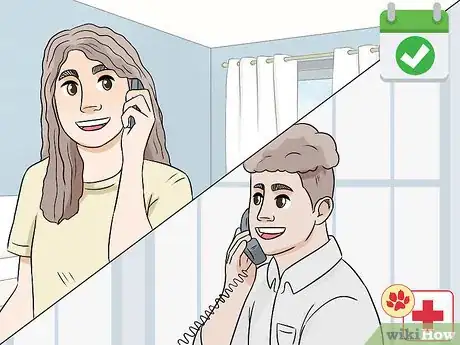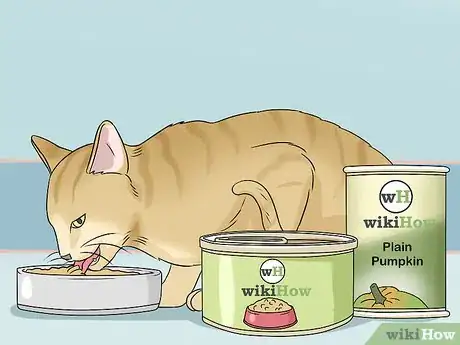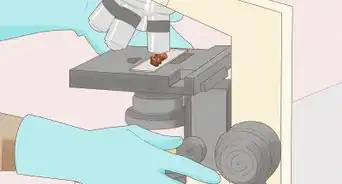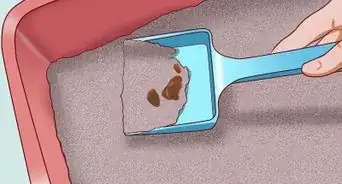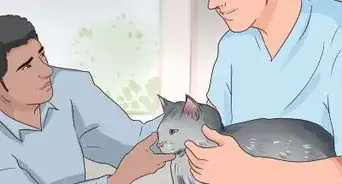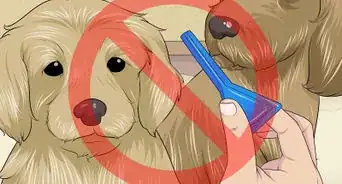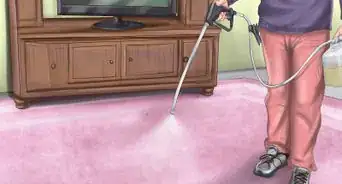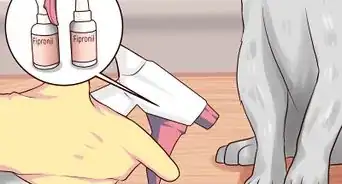This article was co-authored by Deanne Pawlisch, CVT, MA. Deanne Pawlisch is a Certified Veterinary Technician, who does corporate training for veterinary practices and has taught at the NAVTA-approved Veterinary Assistant Program at the Harper College in Illinois and in 2011 was elected to the board of the Veterinary Emergency and Critical Care Foundation. Deanne has been a Board Member of the Veterinary Emergency and Critical Care Foundation in San Antonio, Texas since 2011. She holds a BS in Anthropology from Loyola University and an MA in Anthropology from Northern Illinois University.
There are 8 references cited in this article, which can be found at the bottom of the page.
This article has been viewed 24,806 times.
There are a variety of stool problems that can affect your cat. Many of these problems can make your cat uncomfortable or even be indicative of a larger health problem. To determine whether or not your cat has a stool problem, you’ll need to monitor its behavior and inspect its litter box. You will also need to determine which cat has the problem, if you have more than one cat, so that you can provide proper treatment.
Steps
Monitor Your Cat’s Behavior
-
1Notice your cat’s litter box behavior. You can tell a lot about your cat by how it acts in and around its litter box. Watch how often your cat goes to the bathroom. Listen for any crying or painful sounds while your cat is using the litter box. Notice if bathroom trips were successful or not.[1]
- A constipated kitty may make frequent trips to the litter box (often unsuccessful), and may cry in pain because of its inability to pass the stool.
- A cat suffering from diarrhea may make frequent trips to the litter box as well (usually successful). It may also have some feces stuck in the hair around its anus.
-
2Look at your cat’s stools. One of the easiest ways to determine if your cat is having stool problems is to look inside the litter box. You will be able to tell if your cat is having diarrhea from the runny feces you find in there. You may be able to see some parasites or worms in the feces that could be causing your cat’s stool problems.
- Typically, your cat’s stool should be brown and somewhat firm. If the color or consistency of your cat’s stool changes and becomes irregular for more than a few days, consider consulting your vet.
Advertisement -
3Monitor your cat’s diet. Many stool problems are often caused by what the cat eats. If you have just changed your cat’s food (brand or type), this may upset its digestive tract for a few days, but should normalize shortly. If your cat is not staying hydrated, this could cause constipation.[2]
- If you let your cat free-feed, you may want to consider switching to controlled feeding times to help regulate its bowels.
Determining Which Cat Has the Problem
-
1Isolate each cat one at a time. If you live in a multiple-cat household, it may take a while to figure out which cat is having a problem. Take one cat at a time and isolate it in its own room for a day or two. Give the cat its own litter box so that you are certain about where the stools come from since no other cats are sharing the box.[3]
- Be sure to give the isolated cat all of the things that it needs including a litter box, fresh water, food, toys, and daily attention.
-
2Reintroduce the cats slowly. Whenever you separate your cats, you’ll need to take some time to reintroduce them slowly – even if they were only separated for a few days. You may want to bring the cat back into the home inside its carrier and let the others smell the cat before you release it.[4]
- Allow the cats to smell each other through a closed door. Or you can pet the isolated cat and allow your other cats to smell your hands.
- Consider using a cat pheromone diffuser to help lessen the stress of reintroduction.
-
3Treat all cats if there is a virus or parasite cause. Once you figure out which cat is having the problem, remember that all of your cats have been exposed to the feces of the infected cat. This means that treatment may be necessary for all of your cats, especially if there are certain kinds of worms or parasites involved. Contact your vet for treatment options for all of your cats.[5]
- If you leave some of the other cats untreated, it could cause a cycle of reinfection for your other cats that may be difficult to break.
Treating Cat Stool Problems
-
1Make an appointment with your veterinarian. If your cat has a stool problem, such as inappropriate defecation, for more than a few days, make an appointment with your veterinarian and bring a fresh stool sample to it. Your vet will likely perform a physical exam, examine the sample, and possibly even do blood work, an ultrasound, or an endoscopic procedure to determine the cause and provide you with recommended treatment options.[6]
- Diarrhea can cause dehydration if it lasts longer than 48 hours. Constipation can cause extreme pain or distress for your cat, and lead to further digestive problems.
- You should definitely call the vet if you notice any blood in the stool or if your cat has black stools. Also, call your vet if your cat is experiencing fever or vomiting in addition to stool problems.
- At the appointment, be sure to inform the veterinarian of any foreign materials, such as houseplants, that your cat may be ingesting.
- The veterinarian may prescribe probiotics to help manage long term stool issues.
-
2Regulate the cat’s diet. If your cat is having stool problems, you may need to exert a greater amount of control over what the cat eats. Limit the number of treats your cat eats, switch from free-feeding to controlled feeding, and maintain consistency in food type. You should also try to determine whether your cat is eating anything else (like human food) that it should not be eating.[7]
- Remember to transition your cat slowly (over a period of several weeks) to any new food.
- If your cat is suffering from constipation, try adding plain canned pumpkin to your cat's food. If this doesn’t help, you may need to transition it to canned wet food to help hydrate your cat more effectively. Or consider switching to a low protein, high fiber diet.
-
3Provide extra sources of hydration. Make sure your cat has constant access to fresh drinking water. You should rinse out the water bowl and provide clean water every day. You should also provide several sources of fresh drinking water.[8]
- You may also need to consider adding water to your cat’s dry food or switching to canned wet food to provide more hydration for your cat.
References
- ↑ https://www.aspca.org/pet-care/cat-care/common-cat-behavior-issues/litter-box-problems
- ↑ https://vcahospitals.com/know-your-pet/diarrhea-in-cats
- ↑ http://www.humanesociety.org/animals/cats/tips/solving_litter_box_problems.html
- ↑ http://www.catbehaviorassociates.com/pams-think-like-a-cat-reintroduction-method/
- ↑ http://www.science20.com/news_articles/diarrhea_in_cats_especially_in_homes_with_multiple_cats-156578
- ↑ http://www.petassure.com/newsletters/011511/011511article4.html
- ↑ http://www.cat-world.com.au/constipation-in-cats
- ↑ http://www.vetstreet.com/care/constipation-in-cats
About This Article
To identify problems with your cat’s stool, watch as it goes to the bathroom and notice if it cries in pain from constipation or has feces stuck in the hair around its anus from diarrhea. You can also look at your cat’s stool and see if it has parasites or worms. Healthy stool should be brown and somewhat firm, and if it becomes irregular for more than a few days, you should call your vet. You can also monitor your cat’s diet to make sure it is eating regularly and drinking enough water. For more help from our Veterinary co-author, like how to treat your cat for parasites, read on!
